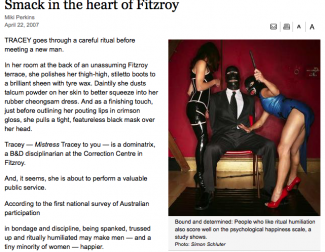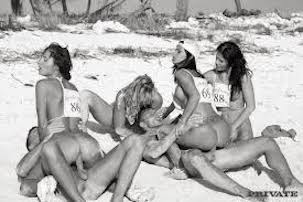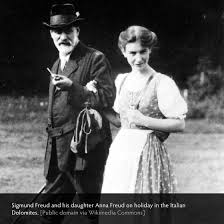The Guardian published a piece on sexual choking. It’s here.
I’ve some reservations with it. For example it doesn’t distinguish clearly between two different phenomena:
1. A lot of porn at the moment, particularly but not only bdsm porn, features choking, where one partner puts their hand on the other partner’s neck and constricts their breathing, and some people are imitating what they see; and
2. Some husbands have murdered their wives, and their defence lawyer has argued that the murder was a “consensual kink session that accidentally went wrong”, as a defence.
It’s unfortunate not to make that distinction, because in the second kind of case kink was not involved. In fact the defence lawyer and the mainstream media have worked together to blame an old-fashioned murder on alternative sexuality.
I have some other problems, like the citing of anti-sexual minority and pro-censorship activist Gail Dines as an “expert” and as a “feminist”, when she is not in the habit of taking contrary evidence into account, and she is significantly opposed to the right of women to make sexual choices of which she disapproves. There are also questions about her relationship with the anti-abortion rights wing of the Christian Right.
Anyway, I’m still pleased that the issue has come up.
 First, a personal statement. As a Dom, I simply don’t do choking. I’ve been a nurse (a psych nurse, but you get some basic medical training), and I know all the systems that run through the neck are delicate enough without people fucking with them deliberately.
First, a personal statement. As a Dom, I simply don’t do choking. I’ve been a nurse (a psych nurse, but you get some basic medical training), and I know all the systems that run through the neck are delicate enough without people fucking with them deliberately.
I do know that it can be done safely. If it couldn’t, then the floors of all the bdsm porn studios would be littered with corpses. And they’re not.
Also, I know many submissives want to try it.
But personally, if someone wants to be choked, I’ll ruthlessly shove their face into a pillow, and check on them after, say, thirty seconds. No, seriously.
The neck grip strikes me as too risky to be fun.
The Guardian article talks about two, possibly three deaths. One was clearly a murder, while the other is perhaps more ambiguous. I know that in my native New Zealand there used to be about 6 deaths every year from erotic strangulation, though almost all of those were auto-asphyxiation, with no one else present.
We simply have no way of telling:
- How many deaths are claimed to be because of “choking”, or erotic strangulation during sexual play; and
- Of those, how many were actually murders, in which the “sexual play” claim was simply a ruse to cover up a murder in which kink was not involved;
- And how many were genuine tragic accidents by people imitating a practice seen in erotica or talking about in magazines, who discovered in the most tragic way that when you constrict the neck, death can come too easily and too quickly.
Now, I don’t think porn changes people’s character or degrades their general behaviour. But what it can do is mislead. If choking is shown as pleasurable to the person being choked, and as requiring no great level of skill or preparation, then a conscientious and well-meaning lover may decide to try it out.
 That is, to claim the practice is only misogynist is to simplify human sexual behaviour. What it actually is, is more dangerous than many people realise.
That is, to claim the practice is only misogynist is to simplify human sexual behaviour. What it actually is, is more dangerous than many people realise.
By “dangerous” I mean you can reduce risk, with guidance and practice, but not eliminate it.
Within bdsm, we need more education. People who want to be doms, and want to do the things in sex that doms will do need certain information. For example:
1 There are some submissives who do, in fact, enjoy careful choking play. However there are many others for whom it is a hard limit. That means they don’t want it, and to try it will break their trust in the dom who tries to include it into sexual play without consent. My guess, based on anecdote and not data, is that submissives who dislike and fear choking are more common than those who like it.
2 Therefore, it should only ever be done with prior discussion and consent.
At the moment, bdsm porn is not doing well at communicating those ideas. Choking is fashionable. Porn has fashions, like the sudden appearance a few years ago of butt hooks. (About which I’m much more enthusiastic.)
Porn makers often behave ethically. An example is promoting condom use. Another example is how quickly the porn industry dropped star James Deen after credible complaints of sexual coercion were made against him. Similar moves in “mainstream” media have taken years, or even decades.
The porn industry doesn’t bear most of the responsibility for the “fashionability” of choking. Cultures are influenced in many complicated ways. But it would be a big help if they stopped promoting it and presenting it as a safe activity that can casually be sprung on the partner, thereby enhancing their pleasure.
There are safer options for forcing a partner to lose control of their breathing for a while, if that’s something they want: pillows, obviously, and even a big bowl of water.
It’s probably time for choking, strangulations and choke holds to quietly fade out of porn, whether bdsm or mainstream.



























